Posted on
August 31, 2017 by
Martin Banks
Sometimes, the new baseball season demands new equipment. If your favorite pair of cleats is separating from their hardened soles, for example, it’s time to trade them in. However, lots of the equipment we put aside as worn out actually has life left in it.
As companies look for cheaper ways to manufacture gear, consumers can be forced to deal with what is ultimately a lower-quality product, and who wants to spend more money on new equipment when you can get more use out of pieces you’ve already paid for? Instead, why not breathe some new life into that old mitt or bat?
Reconditioning Your Mitt
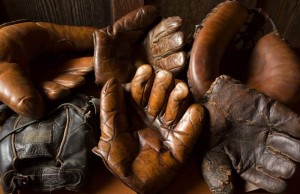
A good baseball or softball glove can last decades, but you’ve got to take care of it properly. Some newer gloves are made of synthetics, which are softer when new but break down more quickly than their natural counterpart, leather. A leather glove requires care, or it will dry out.
When you pull an old leather glove out of storage, it will probably be dry and stiff. A good cleaning and some leather conditioner go a long way toward restoring its supple feel. Wipe the glove down with a damp cloth, and if it’s stained or dirty use rubbing alcohol to remove discoloration. If mold or mildew have grown on it, use a rag soaked in vinegar.
Next, select a conditioning agent. Since so many things are made of leather, you’ve got your choice between old-school options like saddle soap or more recent synthetic conditioners. Use a damp rag and work the conditioner into the glove. Read the rest of this entry →
Tags: BaseballDIY
Category
Baseball, Scott Huntington
Posted on
August 21, 2017 by
Tyrion Smith
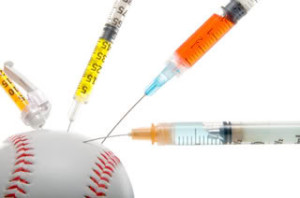 Witnessing the whole BALCO fiasco and long trials of Barry Bonds along with Mark McGwire would have made you wonder that these are the first cases of doping in sports, especially in baseball, but that’s farther from the truth. Yes, the baseball doping was highlighted way more than other incidents of steroid use by athletes in the US, partially because of congressional hearings in 2005 and critically acclaimed movie ‘Bigger, Stronger, Faster’.
Witnessing the whole BALCO fiasco and long trials of Barry Bonds along with Mark McGwire would have made you wonder that these are the first cases of doping in sports, especially in baseball, but that’s farther from the truth. Yes, the baseball doping was highlighted way more than other incidents of steroid use by athletes in the US, partially because of congressional hearings in 2005 and critically acclaimed movie ‘Bigger, Stronger, Faster’.
Initial Phase
The fact is doping history in sports goes all the way back to ancient Rome when chariot racers were used to drink an herbal pre-workout of sorts before races, heightening their focus and endurance. That’s one of the earliest forms (100 AD) of competitive sports known to mankind. Fast forward to 1889, and ironically, a baseball player openly admitted using testosterone, a rather organic form derived from pigs and dog’s testicles. Sure, there were few instances of athletes experimenting with caffeine and liquor here and there, but come on, caffeine and booze can’t be considered doping despite their proclaimed performance enhancing effects.
First Causalities
Soon after the use of testosterone in 1889, the world witnessed the horrors of steroids in 1896 when Ephedrine intake caused death of English cyclist, A.Linton. Then in 1904, Tom Hicks collapsed at St. Louis marathon, and though he won the event, doctors proved use of Strychinine and Cognac.
The Booming Period
After that we saw a boom in the use of drugs that enhance performance of humans to somewhat super human level, across sports and in wars as well. Call it leaked secretive documents or conspiracy theories, soldiers in WW II were given Amphetamines to boost their endurance and focus, both Allied and Axis.
Finally, we see the mid-1900s, when the use of anabolic steroids was rampant and we witnessed highly tuned muscular physiques. It was the era of superiorly muscular bodybuilders like Sergio Oliva, Arnold and later Dorian Yates, Ronnie Coleman and Phil Heath ushered a ground-breaking phenomenon where human limits were pushed to the max. Soon HGH joined the list of anabolic doping agents as the most potent activist. Ironically, the very sport of bodybuilding highlighted the absolute potential of HGH and doping agents, in addition to its side effects. The number of causalities and deaths directly related to abuse of HGH, insulin and anabolic steroids, in bodybuilding is among the highest and the facts are widely documented on social media. However, that happens only when you misuse them. Learn more about HGH here. Read the rest of this entry →
Tags: Barry BondsBen JohnsonDopingMark McGwire
Category
Baseball, General, Health & Fitness, Sports Fitness, Sports History
Posted on
August 15, 2017 by
Lily Jolie
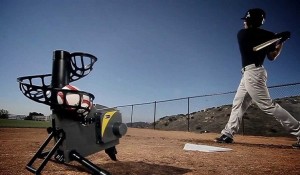 A pitching machine can be of great benefit to baseball players if used appropriately. This tool is designed to enable players to improve and enhance their hitting skills. The machines are also quite reliable for fielding practice as it helps players refine their accuracy skills when hitting the ball towards a particular target. Most baseball players find it overwhelming when strategizing on how to choose the best pitching machine. This is because these machines come in different variations and with different features. Here are a few tips to remember when choosing the best pitching machine:
A pitching machine can be of great benefit to baseball players if used appropriately. This tool is designed to enable players to improve and enhance their hitting skills. The machines are also quite reliable for fielding practice as it helps players refine their accuracy skills when hitting the ball towards a particular target. Most baseball players find it overwhelming when strategizing on how to choose the best pitching machine. This is because these machines come in different variations and with different features. Here are a few tips to remember when choosing the best pitching machine:
Type of pitching machine
Pitching machines come in different types depending on the level at which the machine of choice will be used. These levels include:
Youth pitching machines
If you are a youthful baseball player preparing to take part in a league or competition, there are various options of pitching machines to settle for. Most importantly, the right machine for you is one that throws balls at fast speeds from 50mph and above. You also need to ensure that the machine of choice throws consistent strikes. In addition to this, you also need to ensure that you choose a portable pitching machine. This is because you may have to be wheeling the machine to and from the field during practice sessions. It is also necessary to ensure that the machine of choice is considerably light weight and effortlessly mobile.
Things you might be intested for choose a pitching machine:
http://baseballeagle.com/best-pitching-machine-for-youth-review/
Read the rest of this entry →
Tags: Pitching machinesporting equipmentyouth baseball
Category
Baseball, Sports equipment, Sports Technology
Posted on
July 15, 2017 by
Dean Hybl
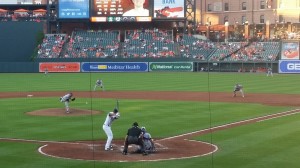
There are a lot more empty seats for a Saturday afternoon Orioles game than there used to be.
I used to think that the New York Yankees were the greatest enemy of my favorite team the Baltimore Orioles. However, it is now becoming abundantly clear that the greatest threats to the future of the Orioles is not a division rival, but instead the evil duo of the Washington Nationals and Major League Baseball.
While it may take another decade or two to come to fruition, it now seems abundantly clear that the goal of the Nationals and Major League Baseball is to force the Orioles out of the city they have called home since 1954 (during which time three different franchises have called Washington home).
Considering that for 50 years the Orioles were one of the model franchises of the league, the fall from grace is quite surprising and disappointing.
It all started when Major League Baseball seized ownership of the Montreal Expos and in 2005 moved the team to Washington, DC.
At that time, Baltimore owner Peter Angelos fought the effort to move the team fearing that it would negatively impact the Orioles television revenue and fan base since Northern Virginia and Washington had long been an important part of the fan base for the Orioles, but while he could not stop the move, he did get some short-term financial concessions.
The Orioles received majority ownership of the MASN (Mid-Atlantic Sports Network) network and were given the rights to broadcast Nationals games at a discount from 2005 through 2011. While this was a short-term win for the Orioles, it seemed to have created resentment from both the Nationals and MLB.
When the initial broadcast compensation agreement ended in 2012, the Orioles were looking to secure future rights at a rate of $34 million per year, but the Nationals and MLB wanted closer to $100 million. Eventually, an arbitration panel made up of executives from other franchises said the value was as much as $66 million. The Orioles appealed the ruling saying the rate should be decided by a group not selected by MLB. The case was in the courts for several years before the ruling came back this week saying that MLB had the right to select the arbitrators.
So, in the five years that this issue has been festering, it appears that MLB and the Nationals have decided that they don’t just want more money from the Orioles TV network, they eventually want the Orioles out of the market. Read the rest of this entry →
Tags: Baltimore OriolesMajor League BaseballWashington Nationals
Category
Baseball, Waiting For Weekend
Posted on
July 04, 2017 by
Dean Hybl
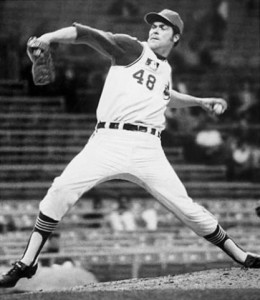
Sudden Sam McDowell
The Sports Then and Now Vintage Athlete of the Month was a hard-throwing lefthander who often led Major League Baseball in both strikeouts and walks. His off-the-field story also made him the prototype for a famed television character.
Sudden Sam McDowell made his Major League debut for the Cleveland Indians a week before his 19th birthday and pitched in the majors for 15 seasons. Read the rest of this entry →
Tags: cleveland indiansSam McDowell
Category
Baseball, Sports History, Vintage Athletes
Posted on
June 18, 2017 by
Dean Hybl
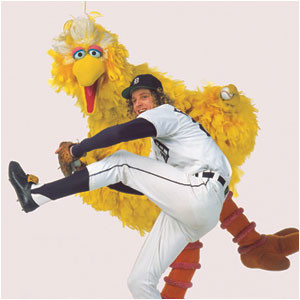
Mark “The Bird” Fidrych was a baseball phenomenon in 1976.
The recent Major League Baseball Draft has brought a new crop of prospects vying to one day secure major league stardom. It is likely that a significant number of players selected in the draft will reach the majors, but even if they achieve short-term success, forging a long and successful career is much harder.
Many players who burst onto the scene as rookies have struggled to maintain that success over the long-term. Below is a look at some former Rookie of the Year winners whose careers soon flamed out.
Earl Williams – 1971 NL Rookie of the Year: At 6-foot-3 and 215 pounds, Earl Williams was a powerfully built versatile player who was primarily a third baseman when he came up with the Atlanta Braves late in the 1970 season. After hitting .368 in 10 games in 1970, Williams earned a starting position for 1971. He began the season at third base, but despite having never played catcher in the minors was soon planted behind the plate and caught 71 games out of the 145 he played as a rookie, On a team with all-time slugger Hank Aaron, Williams proved to be another valuable weapon as he finished second on the squad with 33 home runs and 87 RBI while hitting .260. Playing primarily behind the plate the next season, Williams again had strong offensive numbers with 28 home runs and 87 RBI. However, after striking out only 80 times as a rookie, he whiffed 118 times in 1972. The Braves traded him to Baltimore in the offseason for second baseman Davey Johnson and several other players. He gave Baltimore much needed offensive pop in 1973 with 22 home runs and 83 RBI. His power numbers started to decline in 1974 as he hit only 14 home runs with 52 RBI. He was traded back to Atlanta after the season and spent a year and a half with the Braves before finishing the 1976 season in Montreal. After being released by the Expos, he hit 13 home runs with 38 RBI for the Oakland A’s in 1977. That proved to be the end of the line for Williams, who finished his career with 138 home runs, 457 RBI and a career batting average of .247. He passed away from Leukemia in 2013.
Mark “The Bird” Fidrych – 1976 AL Rookie of the Year: Few players have enjoyed the meteoric rise or quick fall of Mark “The Bird” Fidrych. Earning a spot on the Detroit Tigers roster as a rookie in 1976, Fidrych made only two relief appearances during the first month of the season. However, in his first major league start on May 15th, he allowed the Indians only two hits and one run in a 2-1 complete game victory and the legend of “The Bird” had begun. With his curly hair and lanky body, Fidrych quickly was dubbed “The Bird” in reference to Sesame Street character Big Bird. He also entertained the crowd with his many mannerisms, including grooming the mound and talking to the baseball. Though he lost a 2-0 decision to Boston in his next start, Fidrych rebounded to win his next eight starts, with seven complete games, including back-to-back 11 inning performances. He took his act national on June 28th when more than 32 million people watched on ABC’s Monday Night Baseball as he defeated the New York Yankees 5-1. After losing a 1-0 decision to Kansas City on July 9th, Fidrych entered the All-Star game with a 9-2 record and 1.78 ERA and was named the American League starter for the All-Star Game. For the season, Fidrych completed 24 of 29 starts (five of which went extra innings) and had a 19-9 record and 2.34 ERA in 250 innings. He won the Rookie of the Year Award and finished second in the Cy Young voting. Fidrych suffered a knee injury while fooling around in the outfield in spring training before the 1977 season. However, he appeared fine after his return as he posted a 6-4 record with a 2.89 ERA, but suffered a shoulder injury (later diagnosed as a torn rotator cuff) that proved to be the beginning of the end of his career. He would make only 19 starts for the Tigers over the next three seasons with a 4-6 record. The Massachusetts native tried to make a comeback with the Boston Red Sox, but eventually retired after pitching for the Pawtucket Red Sox. Fidrych died on April 13, 2009 after an accident on his farm. Read the rest of this entry →
Tags: Dontrelle WillisEarl WilliamsMark Fidrychrookie of the year
Category
Baseball, Sports History





